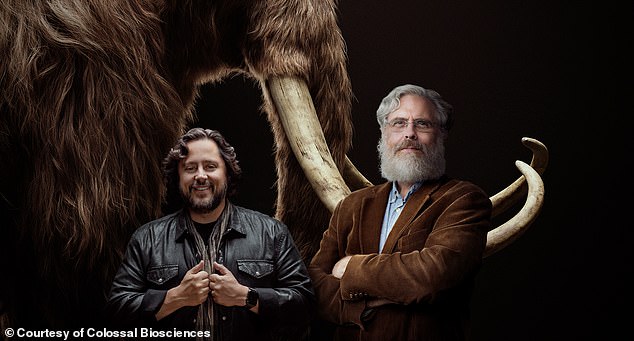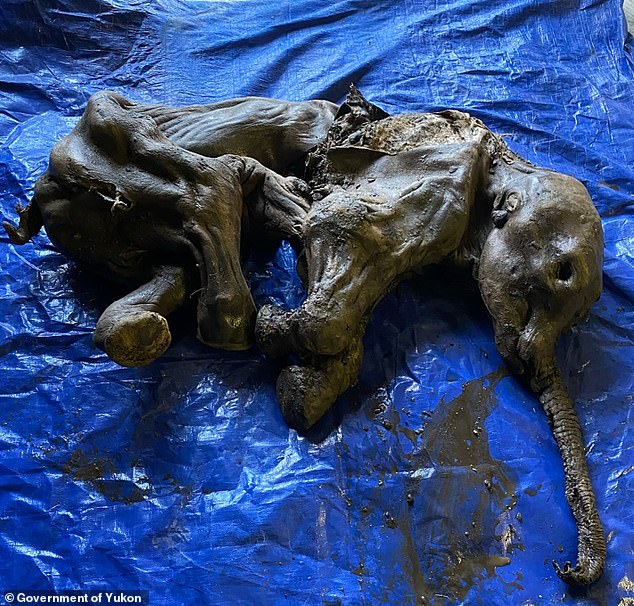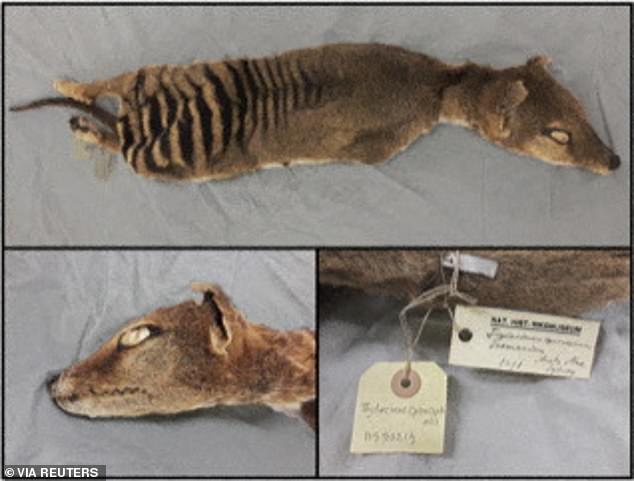De-extinction of the wooly mammoth by 2028? Colossal Biosciences plans to combine DNA from ancient species with living Asian elephants to birth a calf that could live on tribal land
>
The last woolly mammoth went extinct about 4,000 years ago, but if the Colossal Biosciences team has their way, a calf will be born by 2028.
Scientists at the company aim to reconstruct the woolly mammoth genome using samples from the discovered specimens, and fill in the gaps with DNA from modern Asian elephants.
They must then turn the woolly mammoth embryos into surrogate elephants and find tribal and government partners willing to allow the company to release — or “rewild” — the woolly mammoths onto their lands.
The two species share 99.6% of their genome, so this isn’t as big a deal as it might seem.
“It’s a very charismatic creature,” Ben Lamm, CEO and co-founder of Colossal, told DailyMail.com.
“We should be very lucky that 10,000 years from now, people will love us as much as we love mammoths.”
The last woolly mammoth went extinct about 4,000 years ago, but if the folks at Colossal Biosciences have their way, a calf will be born by 2028.
As the permafrost of the Arctic Circle melts, the remains of more and more woolly mammoths are being uncovered and excavated, including those that have stuck to their skin and fur all these years. These samples provide the necessary genetic material.
After reconstructing the woolly mammoth’s genetic code, they plan to insert it into egg cells donated from Asian elephants, fertilize the embryos in a laboratory, and implant them into surrogates.
The first woolly mammoth of the 21st century may be born to an Asian elephant.
Dodos and thylacines (thysmanian jaguars) are also on the extinction list, but the woolly mammoth has been a highlight of Colossal’s efforts.
Eventually, the woolly mammoth populations will make their home on the tundra, Lamm said. The company is “very serious” about its goals.
Since its launch in 2021, Colossal has grown to 115 full-time scientists and 60 external collaborators.

Colossal Biosciences was founded in 2021 by entrepreneurs Ben Lamm (left) and George Church (right)

Woolly mammoth remains, such as those found in Canada in 2022, could help scientists reconstruct the species’ genetic code.
According to Lamm, the company has raised $225 million in funding from major investors, including Thomas Tull, Tim Draper, and Bob Nelson, as well as environmental impact investment firms At One Ventures and Climate Capital.
But the company must achieve many milestones before woolly mammoths can roam the tundra.
Along the way, Colossal’s investors may reap big rewards as Lamm and his companions find lucrative uses for the biotech advances they’re developing to revive the woolly mammoth.
“We think the long-term potential for not only impact here, but for shareholder appreciation is very high, given the technology that will come from this,” Lam said.
For example, biotech startup Form Bio spun off from Colossal in 2022 and raised more than $30 million in funding.
Colossal plans to give its conservation tools to nonprofits and governments, Lam said.
Colossal claimed that the woolly mammoths’ foraging behaviors would nourish tundra grasslands, thus capturing tons of atmospheric carbon and keeping the permafrost thawing. Some have external scientific collaborators Published studies It, but other scientists have published research concluding that de-extinction efforts amount to a Net loss In the form of missing scientific resources.
“I am not against cloning science, but I am against using it as a solution to problems of environmental conservation or even climate change.” Joseph BennettAssociate Professor of Biology, Environmental and Interdisciplinary Sciences at Carleton University in Ottawa told the Daily Mail.
“Unfortunately, this could have a distinctly negative impact, as funding is drawn into risky and ineffective technologies.”
Lam responded to this point by saying that since the Colossal project attracts private investors, it does not take anything from science grant funding.

The last Tasmanian tiger – or Tasmanian jaguar – died in 1936, but Colossal is working to bring it back, too.
Aside from the woolly mammoth, Colossal is also working to bring back the dodo, as well as the Tasmanian tiger, which was hunted to extinction in the first half of the 20th century.
The death of the Tasmanian tiger was based on bad information: Tasmanian farmers thought it was killing their sheep, so the Australian government issued a bounty for the animals.
But the tide has turned in their favor, as scientists and the general public become better aware of the important role predators play in keeping ecosystems in balance. Lam said talks with local officials, industry groups and indigenous communities have yielded two potential rewilding sites.
A recent poll on the Colossal project to eradicate Tasmanian tigers showed this to be the case 77 percent 3,012 participants answered “yes” to the question: “Should scientists try to bring back Tasmanian tigers from extinction?”
Lam said he did not want to persuade the remaining 23 percent, but rather wanted to hear why they voted “no” (10 percent) or “not sure” (13 percent).
After all, if they couldn’t reassure the public that returning extinct animals to the wild would be safe and effective, their entire project was dead on arrival. So far, based on meetings with local residents, the indicators are good, Lam said.
“Time will tell whether these collaborations hold up, but the early signs are very positive.”
(Tags for translation) Daily Mail
